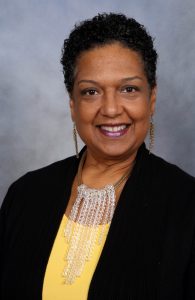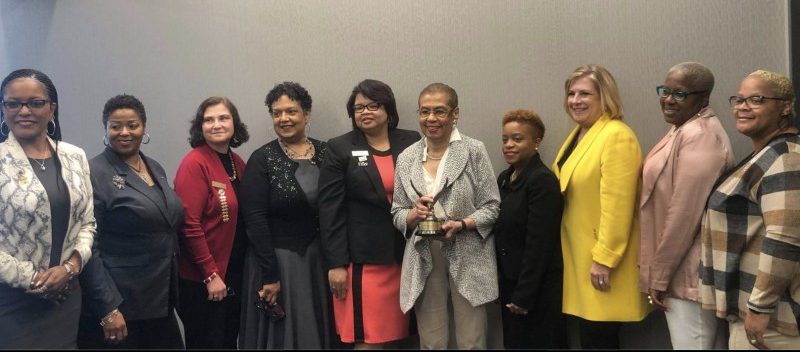As organizations prioritize diversity and inclusion, they often see corresponding improvements in company culture. The variation in thought and background that results from an emphasis on a diverse workforce allows for environments where innovative ideas flourish.
 But how exactly should we define diversity and inclusion in the federal workforce? According to Patrice Wilson, Vice President for Diversity and Special Asst. for Persons with Disabilities at Federally Employed Women (FEW), “the definition for diversity is vast, but the definition for inclusion is clear: Everyone has a voice and a seat at the table. All contributions are valuable.”
But how exactly should we define diversity and inclusion in the federal workforce? According to Patrice Wilson, Vice President for Diversity and Special Asst. for Persons with Disabilities at Federally Employed Women (FEW), “the definition for diversity is vast, but the definition for inclusion is clear: Everyone has a voice and a seat at the table. All contributions are valuable.”
At FEW, Wilson serves as the chair of the diversity committee, and ensures that diversity and inclusion are embedded in training at every level of the organization — national, regional and chapter.
One way FEW does this is by hosting its annual National Training Program (NTP). The 50th iteration of the program is happening this year in Philadelphia, Pennsylvania from July 22 – 26, 2019 at the Philadelphia Marriott Downtown. Each year the NTP theme focuses on one of FEW’s four major focus areas: training, legislation, compliance and diversity. The focus this year is diversity.
“We want to empower girls and young women to lead and serve,” Wilson said in an interview with GovLoop. “We want to plant seeds for our future businesswomen and government leaders.”
Leading up to this year’s NTP, GovLoop spoke with Wilson to learn more about her background in diversity and inclusion and her take on its importance in the federal workforce.
What are your top goals as the Diversity VP?
One of Wilson’s goals is to educate members and leaders on the benefits of diversity because, all too often, the benefits of diversity in the workplace are overlooked. She helps industry leaders understand how tapping into different backgrounds and cultures can lead to enriched views.
Wilson also ensures that FEW is creating and maintaining a culture that encompasses collaboration, flexibility and fairness, and includes diversity in policy, strategic plans and operational procedures. Finally, she helps foster engagement with regional chapters and leaders.
What does your background working in diversity and inclusion entail?
Wilson took on the role of Diversity VP at the 2018 NTP. Her experience in the field extends further back than that, however. She has been an Equal Employment Opportunity practitioner for 19 years and has worked in the civil rights office for 39 years. “This is part of my DNA now,” she explained.
She can also remember a time when diversity was not considered as important as it is today. Diversity was understood as embracing and recognizing all races, ethnicities and religions, but Executive Order 13583, which sought to establish a government-wide effort to promote diversity and inclusion in the federal workplace, changed things.
“As the idea and definition of diversity and inclusion were introduced more broadly, the public and private sectors started to see the big picture,” Wilson said. “I believe incorporating inclusion was the key to understanding the value of diversity.”
Including diverse ideas and thoughts aligns with what FEW tries to do: expand the idea of culture groups beyond accepted parameters.
How will this evolving notion of diversity in the federal government be reflected in the training offered at this year’s NTP? What are some examples of offered trainings?
This year, FEW is hosting a panel discussion with senior leadership to talk about the inclusion of women in agencies and how women can overcome obstacles in the workforce. In addition, the organization is offering 23 diversity-related courses this year.
One session is “Working Through Decades of Differences,” which will help participants analyze, in a highly interactive workshop setting, why it’s important to commit to inclusion and why it’s important not to judge people based on stereotypes.
The “Respect in the Workplace” session will emphasize that a respectful workplace is one that prioritizes fair treatment for all employees and an acknowledgment and appreciation for differences. The concept of civil treatment will be discussed at length. Sessions like this one have allowed FEW to change the way people think, talk, and interact with each other, according to Wilson.
Wilson confirmed that the trainings and conference are designed for everyone. There are specific courses for people interested in a particular topic or field.
How does this conference relate to FEW’s greater diversity goals?
In addition to the conference, FEW works toward its mission by empowering the next generation of leaders and contributors through mentoring and coaching and even including young people in the strategic planning of the organization.
“We need the diversity of insight and ideas to be accessible to everyone,” Wilson said. “These young ladies will one day be in our shoes. Working with diverse groups not only gives us the opportunity to understand how FEW can meet the needs of our members in helping them achieve their goals, but also allows us greater insight to explore new strategies to more effectively recruit the next generation.”
Photo Credit: FEW





Leave a Reply
You must be logged in to post a comment.